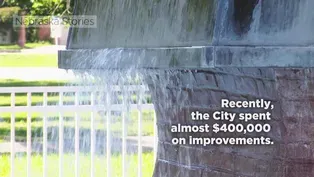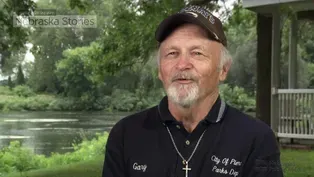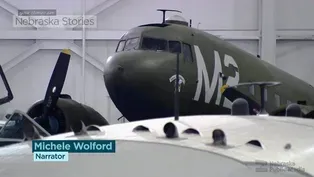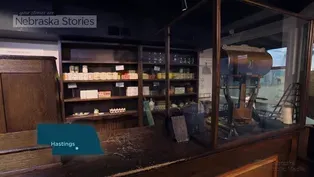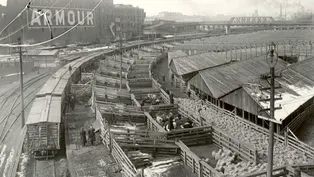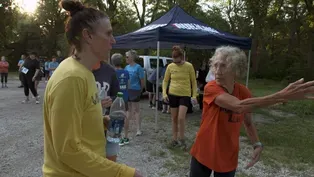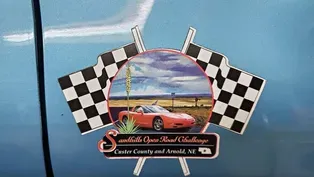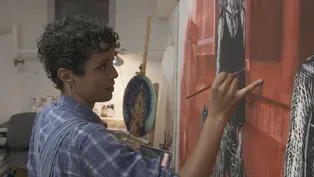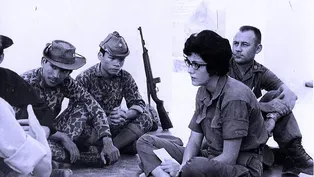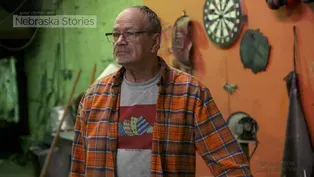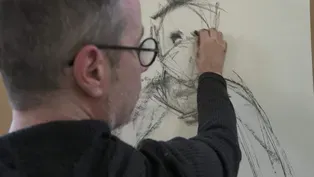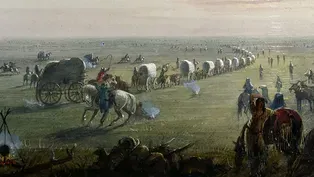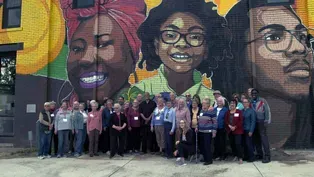
1404: Restoring the Looking Glass
Clip: Season 14 | 8m 5sVideo has Closed Captions
After 6 years, the Boeing EC-135 gets a restoration to its former glory at the SAC museum.
After 6 years and more than 32,000 volunteer hours, the Boeing EC-135 “Looking Glass” has been restored to its former glory. At the height of the Cold War, this aircraft was part of Strategic Air Command’s “Operation Looking Glass,” which mirrored the nuclear command control at Offutt Air Force Base. Now, this historic aircraft is on display at the Strategic Air and Space Museum in Ashland.
Problems with Closed Captions? Closed Captioning Feedback
Problems with Closed Captions? Closed Captioning Feedback
Nebraska Stories is a local public television program presented by Nebraska Public Media

1404: Restoring the Looking Glass
Clip: Season 14 | 8m 5sVideo has Closed Captions
After 6 years and more than 32,000 volunteer hours, the Boeing EC-135 “Looking Glass” has been restored to its former glory. At the height of the Cold War, this aircraft was part of Strategic Air Command’s “Operation Looking Glass,” which mirrored the nuclear command control at Offutt Air Force Base. Now, this historic aircraft is on display at the Strategic Air and Space Museum in Ashland.
Problems with Closed Captions? Closed Captioning Feedback
How to Watch Nebraska Stories
Nebraska Stories is available to stream on pbs.org and the free PBS App, available on iPhone, Apple TV, Android TV, Android smartphones, Amazon Fire TV, Amazon Fire Tablet, Roku, Samsung Smart TV, and Vizio.

Do you have a Nebraska Story?
Do you have a story that you think should be told on Nebraska Stories? Send an email with your story idea, your name, your city and an email address and/or phone number to nebraskastories@nebraskapublicmedia.org. Or, click the link below and submit your information on nebraskastories.org.Providing Support for PBS.org
Learn Moreabout PBS online sponsorship[MarkÑ This is your battle staff area, and you can see right here is corrosion.
It's there, it's there, it's there, it's everywhere.
[Narrator] Mark Hamilton has been restoring aircraft at the Strategic Air and Space Museum in Ashland for more than two decades.
(piano music) The B-29 Superfortress, The C-47 Skytrain and now this one, the EC-135 Looking Glass.
Some stuff is so deteriorated that you have to paint it.
There's mold, this stuff's gonna have to come out.
(scratching sound) This piece, there's a nut plate that fits up here where that screw went.
That piece is all corroded off.
[Narrator] This is the largest and perhaps the most important restoration project to date for the museum.
Just think of the copper that's up there.
We're gonna take all that copper out.
-And sell it?
(laughs) -And sell it.
(laughs) [Narrator] The two men who initiated the effort to restore this aircraft spent years working aboard the plane.
This was the heart of the operation.
Twenty-four hours day, seven days a week, week after week, month after month, year after year.
I mean, this was the heartbeat.
This part of the airplane is referred to as the battle staff area.
(piano music) And this would be the chair right here that the general sat in.
This chair right here.
[Narrator] Retired 4-star General John Chain is the former Commander of the Strategic Air Command at Offutt Air Force Base in Bellevue.
He, and former Emergency Action Team Officer Al Buckles want others to know the role this plane played in helping the US win a war it never had to fight.
So it was airborne 24 hours a day, 7 days a week for many, many years.
And if we were ever as a country under attack, particularly with nuclear weapons, we had a command post that could operate and be able to control and make sure that the missiles that we had, when the President of the United States made the decision, we would be able to launch them.
(inspirational music) [Narrator] For nearly 3 decades beginning in 1961 at the height of US and Soviet Cold War tensions, Strategic Air Command operated airborne command posts, code named "Looking Glass," for its ability to mirror the nuclear command and control functions underground at Offutt.
They never come to the general to say, "may I go do this?"
They just knew their job had to be done this and they did that, okay?
[Narrator] General Chain never got the call to launch from the President, but it was a responsibility he was ready to execute at any time.
[John] We were so strong and so well-prepared.
They'd have to know that we would retaliate, and it would be a terrible retaliation.
I mean, we would eliminate them basically.
[Narrator] There were a number of Looking Glass aircraft built but this will be the only one on display in the world.
The general was at the helm for the final mission.
[John] The biggest memory is the quality of the crews flying the airplane and the battle staff.
They were a band of brothers and sisters.
They knew what they were doing and the importance of the mission, and they did it extremely well.
[Narrator] It was once a state-of-the-art aircraft, walls lined with the latest in electronic equipment, high-tech wiring and control panels and manned by a highly trained, elite crew.
In 1990, with the collapse of the Soviet Union, the continuous airborne mission ended and the Looking Glass was put on ground alert status.
It was the end of an era as newer technologies and efficiencies replaced this relic of the Cold War.
For many, the Looking Glass is an icon of peace, but the aircraft's current state belies its historical significance.
(soft music) Now, much of the plane has been tagged and stripped.
Bare walls expose rotted insulation and corroded panels.
Every instrument, from cockpit to tail, is being restored and reinstalled.
After deteriorating outside for nearly two decades, this EC-135 Jet, also known as the "Doomsday Plane", is inside a hangar at the museum, wings clipped, and more than half-way through a multi-year restoration project.
[Mark] I knew this one was going to be a lot of work.
The aircraft had never been sealed.
It had a lot of openings in it.
When it sat out there, the right side of the aircraft was facing on the west side of the...
So all the snow came and it formed them barnacles and so I was out there killing wasps and plugging holes.
There was damage on this panel so I had them remove this panel and then we found bird nests.
And that was the same underneath but it was like a bale of hay coming out.
[Narrator] For the past couple of years, Hamilton has been working with a rotating crew of volunteers to bring this iconic warhorse back to its appearance during the height of the Cold War.
(classic music) [Mark] Good?
All right.
[Narrator] Some of the volunteers have a personal stake in the restoration.
I was flying the Looking Glass from 1978 to 1982.
(classic music) I was a communications officer and airborne launch control systems officer.
I knew what it was when it first came out here and then I saw the deterioration and it made me feel upset.
I pulled my old chair out and put it in storage and I pulled my console out and it's in storage and I cleaned that down to the metal.
So I'm looking forward to the time when we start putting the components back in.
(classic music) [Narrator] Volunteer Steve Stevens piloted the Looking Glass and flew 18 missions on this very plane.
[Steve] You look at the airplane and you say, "you know, I flew that beauty."
You live in the past, I guess, is the best way to call it; and I thought it was a good project, I needed, you know I'm retired and I had plenty of time so, (classic music) it's a lot of memories.
(classic music) [Narrator] Six years later, the faces have changed and so has "The Glass."
[Andy] We have about, on average, you know, about 40 active volunteers, a lot of veterans, a lot of people who just love airplanes, a lot of people with just a lot of skills, and who are very, very generous with their time, and none of this would happen without them.
[Narrator] Andy Beemer has been with the project from nearly the beginning and oversaw the final steps of the restoration.
[Andy] The last I looked up was the other day was 33,474 volunteer hours, which is the most we've ever put into one of our planes.
So it beat the B-29 by a couple thousand hours.
(classic music) But the biggest thing, the most gratifying thing about the job of restoration is when you're done and you see somebody who was a crew member on the plane that you just restored and you see that they're happy that someone took care of their plane, and you see the satisfaction they have in their service, you know that you did something for them and it means something to them.
It means a lot more to us as volunteers and restoration guys.
(soft piano music) (classic music)
Video has Closed Captions
Clip: S14 | 1m 43s | Jacob Fisher Rainbow Fountain gets some TLC (1m 43s)
Video has Closed Captions
Clip: S14 | 5m 6s | A guided tour of Pierce's Gilman Park with some unexpected turns. (5m 6s)
1404: Restoring the Looking Glass
Video has Closed Captions
Clip: S14 | 8m 5s | After 6 years, the Boeing EC-135 gets a restoration to its former glory at the SAC museum. (8m 5s)
Video has Closed Captions
Clip: S14 | 3m 25s | Discover the truly sweet origin story of Nebraska's official soft drink (3m 25s)
Video has Closed Captions
Clip: S14 | 8m 45s | High School athletes are given a chance of a lifetime (8m 45s)
Video has Closed Captions
Clip: S14 | 8m 28s | A look back at the Omaha Stockyards (8m 28s)
1402: Ann Ringlein: On the Run
Video has Closed Captions
Clip: S14 | 8m 6s | Keeping pace with runner Ann Ringlein (8m 6s)
Video has Closed Captions
Clip: S14 | 11m 28s | In August, the community of Arnold hosts its annual Sandhills Open Road Challenge. (11m 28s)
Video has Closed Captions
Clip: S14 | 7m 39s | An artist explores the intersections of race, gender, and identity. (7m 39s)
Video has Closed Captions
Clip: S14 Ep13 | 9m 55s | She was the longest serving American correspondent of the Vietnam War. (9m 55s)
Video has Closed Captions
Clip: S14 Ep13 | 10m 41s | The Pawnee's efforts to preserve their sacred, ancestral corn. (10m 41s)
Les Bruning's Tumbleweed Symphony
Video has Closed Captions
Clip: S14 Ep13 | 6m 33s | The humble tumbleweed elevated through art. (6m 33s)
Video has Closed Captions
Clip: S14 Ep12 | 8m 56s | Capturing the essence of humanity (8m 56s)
Video has Closed Captions
Clip: S14 Ep12 | 11m 28s | Her coaching strategy included advancing equity for her players. (11m 28s)
Leonard Knight: Before Salvation Mountain
Video has Closed Captions
Clip: S14 Ep10 | 12m 6s | Leonard Knight's bumpy road to salvation (12m 6s)
Video has Closed Captions
Clip: S14 Ep10 | 6m 14s | A Yazidi refugee finds a connection to his homeland in the Nebraska soil. (6m 14s)
Video has Closed Captions
Clip: S14 Ep7 | 7m 52s | Dig into Oregon Trail history with a man who spent his life near it. (7m 52s)
Video has Closed Captions
Clip: S14 Ep7 | 8m 3s | A guided tour of North Omaha's rich past as it looks to its future (8m 3s)
1407: Lloyd McCarter & The Honky-Tonk Revival
Video has Closed Captions
Clip: S14 Ep7 | 5m 40s | Lloyd McCarter & The Honky-Tonk Revival share their take on old-time country. (5m 40s)
Providing Support for PBS.org
Learn Moreabout PBS online sponsorshipSupport for PBS provided by:
Nebraska Stories is a local public television program presented by Nebraska Public Media
